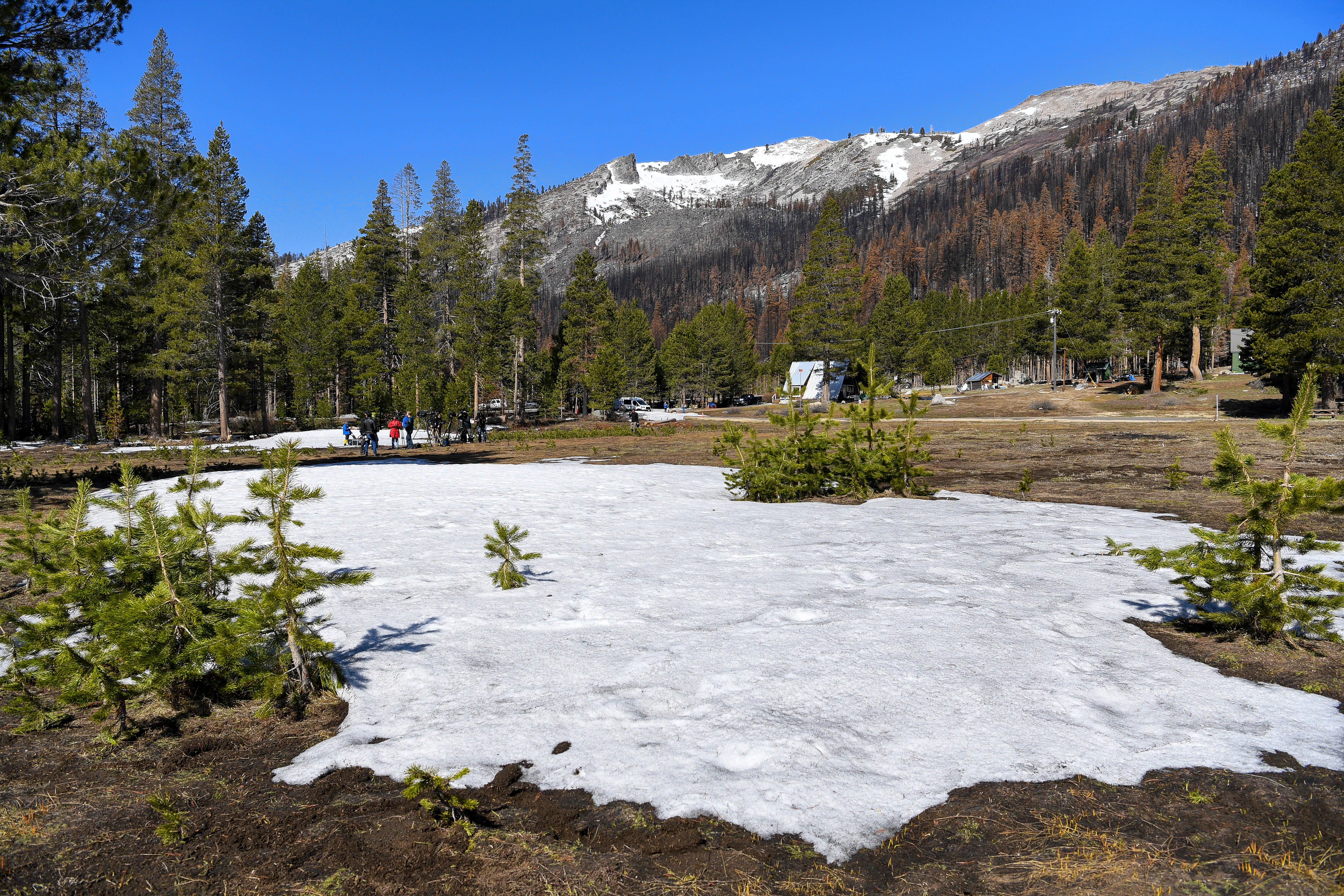Snow-water content
Snow-water content
The amount of water stored in the state's snowpack – referred to as snow-water content – has been variable, ranging from a low of 1.4 inches in 2015 to a high of 67.2 inches in 1952. Heavy winter storms resulted in one of the largest snowpack years on record in 2023.
California’s snowpack accumulates from October to March in the Sierra Nevada and the southern Cascade Mountains. The snowpack supplies water needed for domestic and agricultural uses, hydroelectric production, winter recreation and tourism, and supports diverse ecosystems. The amount of liquid water stored in the snowpack is referred to as snow-water content. For more information, download the Snow-water Content chapter.
What does the indicator show?
Statewide April 1 snow-water content (percentage of average)
The graph shows the amount of water contained in snowpack each year as a percentage of the 1991-2020 average (about 28 inches). Measurements are taken around April 1 each year, when the snowpack has historically been the deepest.
- Since 1950, statewide snow-water content has been highly variable, ranging from more than 200 percent of average in 1952, 1969, 1983, and 2023 to 5 percent in 2015 during the multi-year drought (2012 to 2016). (Average snow-water content is about 28 inches on April 1, based on the water years 1991-2020.)
-
In recent years, there have been larger swings between wet and dry periods, known as weather whiplash. Since 2011, there have been some of the lowest (2013, 2014, 2015, and 2022) and highest (2011, 2017, 2019, and 2023) snow-water content measurements.
Snow remaining on the ground on April 1, 2022 at Phillips Station in the central Sierra Nevada. Measurements taken near the first of the month from January to May at this and at over 260 other locations throughout the range are used to forecast the amount of water that will be released as snowmelt later in the year.

Credit: Ken James/California Department of Water Resources
Why is this indicator important?
- The Sierra Nevada snowpack has historically provided approximately 15 million acre-feet of water, or about a third of California’s water supply.
- Monitoring the snowpack is key to managing the state’s reservoirs to minimize flood risks in the winter, and to ensure sufficient supply the rest of the year.
- Long-term monitoring of snow-water content can inform how California’s water management practices, which were designed based on historical climatic conditions, must adapt to a changing climate.
What factors influence this indicator?
- Winter and spring precipitation, air temperature, sunlight, and elevation affect snow-water content. As air temperatures warm, more precipitation falls as rain instead of snow, resulting in less snowpack.
- A lack of winter precipitation and/or warm temperatures can lead to anomalously low snow-water content, referred to as “snow drought.” Consecutive snow drought years, which currently occur in the western United States at about 7 percent of the time, are projected to become more frequent in the mid-21st century.
- The amount of water contained in snow can differ. Warmer snowstorms produce "wetter" snow, with higher snow-water content, compared to dry, powdery snow produced during very cold snowstorms.
Additional resources
- California Department of Water Resources, Snow surveys
- California Department of Water Resources, California Data Exchange Center – Snow

